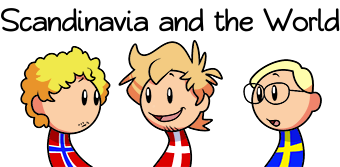Siblings
Page History
| ID | Date | Member | View |
|---|---|---|---|
| 1261 | 11 years ago | leoperidot | View |
| 1252 | 11 years ago | star3catcher | View |
| 1251 | 11 years ago | star3catcher | View |
| 1250 | 11 years ago | star3catcher | View |
| 1249 | 11 years ago | star3catcher | View |
| 1248 | 11 years ago | star3catcher | View |
| 1247 | 11 years ago | star3catcher | View |
| 1246 | 11 years ago | star3catcher | View |
| 1245 | 11 years ago | star3catcher | View |
| 1244 | 11 years ago | star3catcher | View |
| 1221 | 11 years ago | AsianInvasion | View |
| 1146 | 11 years ago | Danmark1 | View |
| 1144 | 11 years ago | Danmark1 | View |
Selected Version:
All main countries in "Scandinavia and the World" have a sibling of the opposite sex, and it is indeed implied that every nation has both a male and female representation. The concept was first introduced in, "Meet my Sister", which humon says was created primarily in order to demonstrate the differences between the stereotypes surrounding Swedish men and women. Although most sets of siblings are very alike in personality, appearance, and mannerisms, there are several notable pairs (such as the Sweden siblings, and the American siblings) that differ considerably from each other. In this fashion, siblings may be used to also reflect differing ideologies, beliefs, and values within one country.
Typically, one sibling will considered the "main" representation of the country while the other is more often denoted as the "other." Because most of the main characters are male, this once lead to the misconception that all male representations were the "main" entity whereas their female counterparts were always referred to as "Sister [Nation]". This was later denied by humon, who explained in "French Siblings" that there are cases where the female representation is the "main country" and the other is "Brother [Nation]", such as in the case of France, Mexico, Brazil, and others. The exception to this is if the "other" nation is present without their sibling, during which they will often be referred to simply as their nation name, such as in "Monster in the Lake".
Most siblings have the same haircolour, but not all.
Siblings with same haircolour:
America and Sister America
Australia and Sister Australia
Canada and Sister Canada
Denmark and Sister Denmark
Faroes Islands and Sister Faroes Islands
Finland and Sister Finland
France and Brother France
Norway and Sister Norway
Sweden and Sister Sweden
Siblings with different haircolours:
England and Sister England
The Netherlands and Sister Netherlands
Last edited: 11 years ago | By: star3catcher

